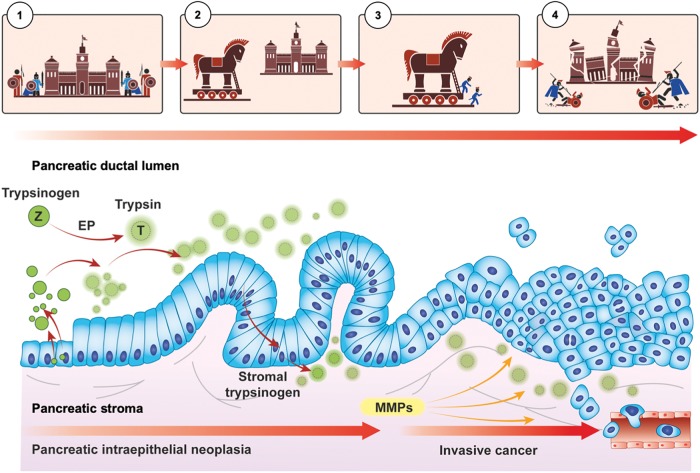FIG. 1.
An analogy of trypsin as a Trojan horse in pancreatic cancer. Depicted is to the left (1) the normal checks-and-balances between intraluminal release of trypsinogen only activated into trypsin by EP in the duodenum. This is the analogy to the “siege” or, “closed doors” were indolent/inactive warriors are barred from action due to the active barriers and regulators. With neoplastic transformation (2), trypsin may be prematurely activated either within the cell (which activate cascades), at the luminal side of epithelial cells, or in the stroma due to leaks as integrity of cellular structures weakens (e.g., due to inflammation) or active transport by endovesical transport mechanisms. Trypsin may (3) act as a catalyst to several downstream effects, likely with PAR-2 as an important activator both at the luminal side and in the stroma, through which (4) proliferation, invasion, and metastasis is then facilitated through several molecular mechanisms. The analogy serves to illustrate for educational purposes the likelihood of an activator (enemy) within the cell (city walls) that break down the natural barriers. See main body of text for further details. EP, enteropeptidase; PAR-2, proteinase-activated receptor 2.

